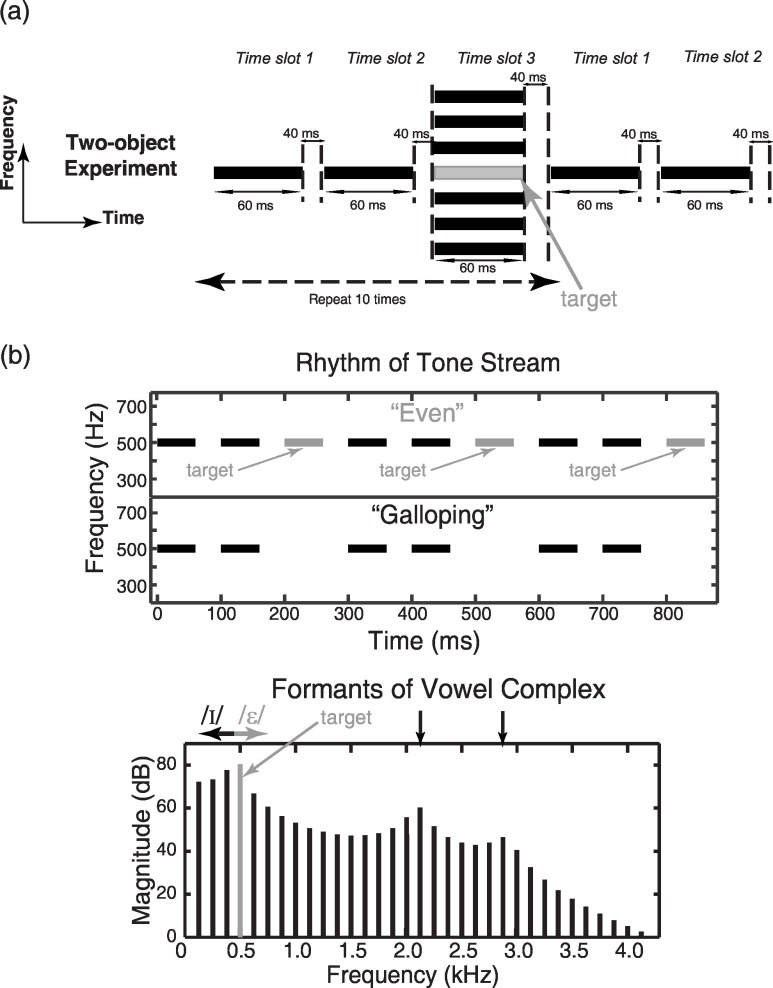FIG. 1.
(a) Two-object stimuli were created by repeating a three-item sequence consisting of a pair of pure tones followed by a harmonic complex. In the reference configuration, the tones in time slots 1 and 2 are at . Time slot 3 is made up of two components: a target tone at and a tone complex with fundamental frequency of (with the fourth harmonic at omitted). The tone complex is shaped by a synthetic vowel spectral envelope to make it sound like a short vowel (Darwin, 1995). Because the first formant of the vowel complex is near , the relative level of the target tone perceived in the vowel complex affects perception of the first formant frequency, which affects the perceived identity of the vowel. (b) Top panel: The perceived rhythm depends on whether or not the target tone is perceived in the sequential tone stream. If the target is grouped with the repeated tones, the resulting rhythmic percept is even; if the target is not grouped with the pair of tones, the resulting perceived rhythm is galloping. Bottom panel: The synthetic vowel spectral envelope is similar to that used by Hukin and Darwin (1995). The identity of the perceived vowel depends on whether or not the target is perceived in the complex. The vowel shifts to be more like when the target is perceived as part of the complex and more like /ɪ/ when the target is not perceived in the complex. The arrows indicate the approximate locations of the first three formants of the perceived vowel.

